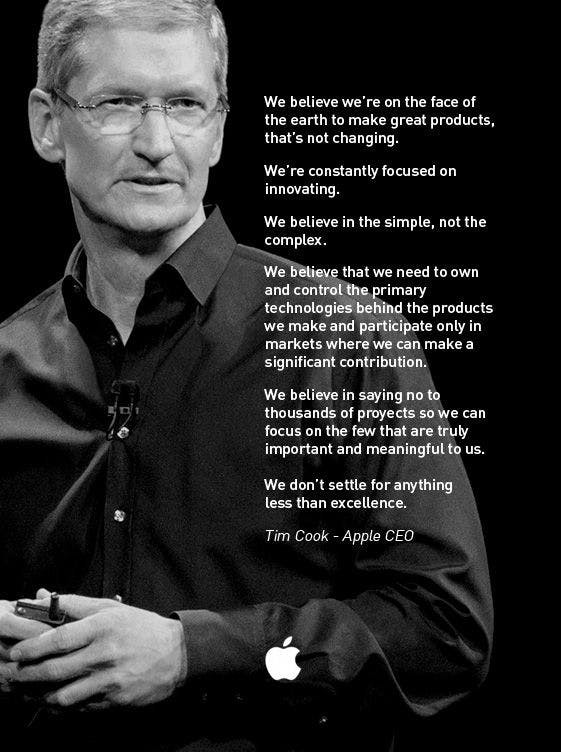Is there a difference between a mission statement and a manifesto?
Yes and no. Their intentions may be the same but that’s where the similarity ends.
In practice, the outcomes of mission statements and manifestos are miles apart. Though manifestos and missions are crafted to bring people together behind a cause, manifesto’s have a much better track record of igniting action.
The best are so emotionally charged that their catalytic influence can endure for centuries. Such was the case for the 10 Commandments, and the Declaration of Independence.
As recently as 50 years ago, an emotional speech delivered by Martin Luther King, Jr. from the steps of the Lincoln Memorial established a clear and convincing purpose for American civil rights. I Have a Dream is arguably the most inspiring manifesto of our time.
Manifestos CAN work for companies
Manifestos are best known for political movements, but the emotion of such texts can also motivate people to excel in the world of business.
Apple is a good example. CEO Tim Cook stated the Apple Way six months before Steve Jobs passed away. That declaration left employees and investors believing that Apple could go on without Steve Jobs. Here was the gist of that text:
Apple is on the face of the earth to make great products. We’re constantly focusing on innovating. We believe we need to own and control the primary technologies behind the products that we make and participate only in markets where we can make a significant contribution. We believe in saying no to thousands of projects so we can focus on the few that are meaningful to us. We believe in deep collaboration and cross-pollination in order to innovate in a way others cannot. We don’t settle for anything other than excellence in any group in the company, and we have the self-honesty to admit when we’re wrong and the courage to change. Regardless of who is in what job, those values are so embedded in this company that Apple will do extremely well.”
Thriving without Steve Jobs
Fast forward six years, and the proof is in the pudding. Apple is going on without Steve Jobs. The style of CEO leadership may have changed, but not the culture of Apple that continues to hit the high notes of innovation and financial performance.
Crafting a company manifesto is far more difficult than crafting a mission or vision statement. It takes plenty of thought, hours of collaboration, and a very good understanding of the business and the existing culture.
Here are six (6) critical components to a potent manifesto:
- State deep emotional principles — Apple’s compelling purpose is about existing to make awesome products, and operating under emotional principles.
- Capture core values — Tim Cook’s manifesto is loaded with core values – admitting error, innovating, collaborating, and demanding excellence.
- Be truthful — Most mission statements are full of illusionary visions. Great manifestos touch the emotions when they are authentic.
- Link business life to personal life — Apple’s manifesto doesn’t do this. It likely doesn’t have to, because unlike most industries, tech life and home life are intertwined.
- Be inclusive — The manifesto must touch (and move) everybody. I don’t know if Disney, Nike, Cirque du Soleil, or the New England Patriots have a manifesto — but, they sure act like they do.
- Differentiate — There is nothing more powerful than differentiation in a competitive arena. When defining differentiation, do it in simple terms.
Why manifestos are better
Manifestos, unlike the stereotypical mission statements, tell everyone who you are, what you believe in and why you are prepared to invest of yourself in the cause.
Is your company ready to enact a potent manifesto? If not, where are the constraints and what can be done about those constraints? Is it possible that a manifesto that meets the above criteria might do just that?
This post originally appeared on CultureUniversity.com.
